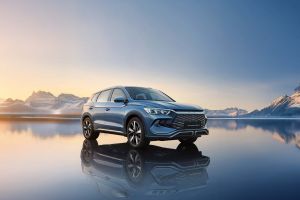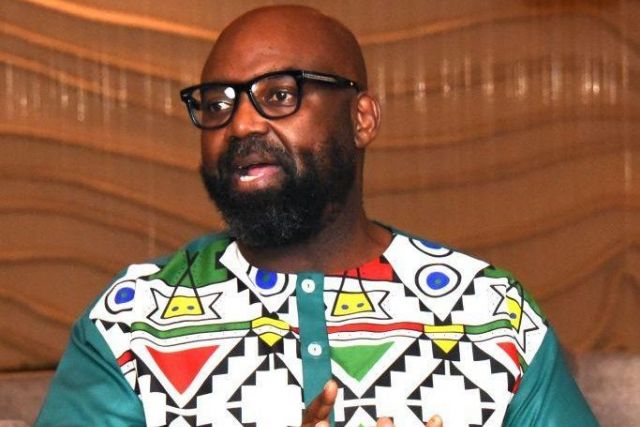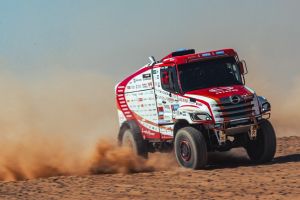
BYD brings affordable PHEV SUV to the market
BYD has added another model to its line-up in South Africa. This time it is the Sealion 5, which slots in below the larger Sealine 6, which is also available locally.
- Product News
- 15 December 2025
The first session of naamsa’s roundtable industry discussions on the transition to new energy vehicles (NEVs), which was held in Pretoria on 19 April, delivered a healthy mixture of concern, hope and possible solutions by the seasoned expert auto industry participants.

The first session, titled What can we do together, today to prepare for tomorrow? was facilitated by naamsa CEO, Michael Mabasa, and featured a panel consisting of Andrew Kirby (Toyota SA CEO), Alec Erwin (former Minister of Trade and Industry) and Mike Whitfield (President of the African Association of Automotive Manufacturers (AAAM)).
Kirby said a number of challenges had to be addressed in what he labelled a “complex discussion”. He said various technologies, including fuel cells, low carbon fuels and zero carbon fuels, were being developed in the NEV space, and the dilemma was “how and when to invest in which technologies”. Kirby went on to say that the complexity of the South African market was another challenge in terms of transitioning both the manufacturing base as well as the local sales base. Other challenges he identified were the fact that SA exports were reliant on the direction being taken in Europe and the fact that SA was part of a global race, not only for scarce resources but also to be recognised as a potential destination to produce NEVs by the global OEMs.
“We need a collaboration between government, labour and industry to find solutions. Timing is critical as well as how quickly we establish a value chain,” said Kirby.
He suggested as a first step “starting on a small scale as quickly as possible. If we wait five years or for the 100 000-vehicle market, we are going to lose out.” He also implored the Department of Trade, Industry and Competition (dtic) “to put a lot of thought into mechanisms that are being implemented so that we don’t end up with unintended consequences later”.
Considering the recent African Free Trade Continental Business Conference that he attended, Whitfield said he had a different perspective. “There is incredible energy, drive and opportunity to create the world’s largest trade block in Africa,” he said. According to Whitfield there would be between three and five million new vehicles in Africa by 2035 and NEVs would be part of it. He also said that according to predictions there would be 359 million NEVs on the road in 10 years’ time. “Africa produces and has key components needed for these vehicles, especially cobalt and lithium. It is vital that we play a significant role in adding value to those raw materials and becoming a key value-added industry,” said Whitfield.
For Whitfield one of the main concerns was the dumping of used and almost new first-generation energy vehicles in Africa. He pointed out that a solution for this was to offer the market affordable NEVs.
Erwin shifted the focus to how policy would influence the strategic conjuncture. “We have faced existential challenges in the industry before. In the early 1990s, we realised that the industry was crucial for our manufacturing but that we didn’t have a snowball’s chance in hell of keeping it in the form it then existed in. We had to make a profound structural change in the industry otherwise we were dead. That change was to accept that we had to become part of the global auto sector. In the process, working with the Australians and Brazilians, we developed something that today is incorporated into the World Trade Organisation, namely a trade-related investment measure,” said Erwin. “This is not a fiscal incentive but the utilisation of tariffs and other possible duties to encourage larger production runs in the economy, reducing the number of models and allowing for rebates,” he explained.
He said he did not see the structural changes in manufacturing as a threat for Africa but rather as “a massive opportunity. We got the capacity of advanced manufacturing production, and we are a full-blown integrated manufacturing facility. Most importantly, we have a well-managed industrial policy with naamsa and Naacam. It is not dependent on government departments but on partnerships between government and organised industry.”
Erwin said the key inhibitors in the African and SA markets were the building of a university on the complexity and sophistication of building an automotive policy, the adoption of these difficult policies and powerful, invested international interests.
In closing Kirby said: “We got a dynamic industry that has a tremendous amount of commitment in making it work. We have a continent that is growing, and we can position ourselves for it. We have a free trade agreement with Europe that can help us transition, and we have the skills and human resource capacity.”
Erwin concluded by saying: “We are at a particularly unusual conjuncture at the moment that offers considerable opportunity for SA. The longer we take to make decisive decisions, the more the opportunity will evaporate. Now is the time to structurally change your economy.”

The Big C, as cancer is sometimes referred to, is survivable, and knowledge about it plays a vital role in overcoming it.

Over the past six years, South Africa has witnessed a marked rise in the monthly repayments agreed upon by vehicle buyers, with the sharpest increases seen among those financing used cars rather than new ones.

The Dakar Rally is often portrayed as a heroic clash between man, machine and an unforgiving wilderness.